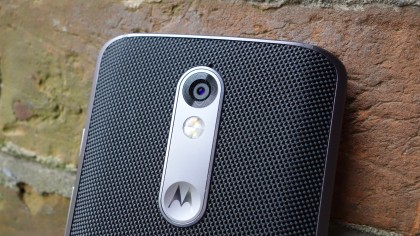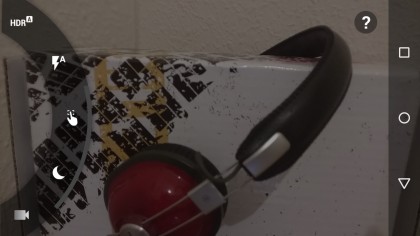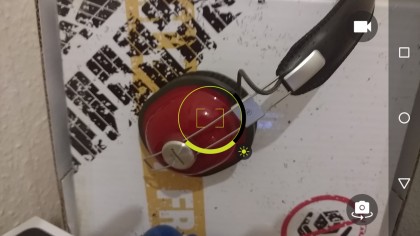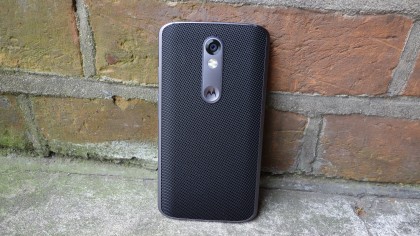Why you can trust TechRadar
Motorola has made massive strides with its smartphone cameras of late, and the Moto X Force continues that fine work.
It comes packing the same 21-megapixel rear camera and 5-megapixel front camera that found their way into the Moto X Style.
As I've touched on elsewhere, Motorola has attempted to make taking a picture with the Moto X Force as easy and quick as possible, with mixed results.

For example, there's the dual-twist gesture shortcut for jumping straight to the camera app from sleep. It's a nice idea, and it's reliable enough, but it simply doesn't feel as instinctive or easy as some of its rivals' button shortcuts.
Motorola also goes with a tap-to-shoot interface for taking pictures, which instantly focuses and takes a snap wherever you touch the screen. This can lead to you capturing moments very quickly, but it doesn't make for the most consistent results.
I much prefer the standard practice of hitting a virtual shutter button to take the snap, tapping to focus if necessary. It's simply more considered, and leads to you getting the precise shot you want more often, but there's no such facility here.

Fortunately, there is an alternative option that I enjoyed using much more than the default, which sees you dragging a focus reticule around the screen and tapping outside it to shoot. This mode also enables you to quickly adjust exposure by adjusting a little sun dial around the focus point.
This alternative shooting mode is accessed through the Moto X Force's camera app menu, which you access by dragging in from the side of the screen. It's a pretty limited menu, with none of the fine manual control options of the Samsung Galaxy S6 or LG G4.
For your average user this won't matter, of course, but for those who want to take time constructing their shot it might – and given how good the actual camera tech is now, Motorola is going to start attracting such people.

The Moto X Force comes with many of the key features we've come to expect from modern high-end smartphone cameras, but it also omits one. It's got a fast f/2 aperture and Phase Detect Auto-Focus, for example, but it lacks the Style's optical image stabilisation (OIS).
The latter omission is a shame, but overall the Moto X Force is capable of taking some fine shots. Photos taken in low light do exhibit noise, as is normal with such small cameras, but I was impressed with the general balance of the shots. Colours appeared accurate, and the auto HDR feature worked quietly and efficiently in trickier scenes where there was a big contrast between dark and light.
Like its flashier brother, the Force's main camera also features a two-tone flash, which Motorola calls a 'Colour Correlated Temperature' (CCT) flash. This provides more natural-looking extreme low-light shots, detecting the ambient lighting temperature and outputting the appropriate flash tone.

I can't say that it completely transformed my indoor shots – I'd still prefer not to use the flash at all – but the snaps I took didn't exhibit any overly washed out or bizarre tones.
Arguably of more consequence these days is the presence of a flash for the 5-megapixel front-facing camera. Combined with a wide-angle lens, it means your selfies should be better lit and more inclusive than ever.
In general usage, then, the Moto X Force didn't quite match up to the likes of the iPhone 6S for sheer dependability or ease of use. Nor did I feel it matched the Samsung Galaxy S6 of the LG G4 for fine-tuned shooting control. But it's still a good camera that can bag you some great shots.
